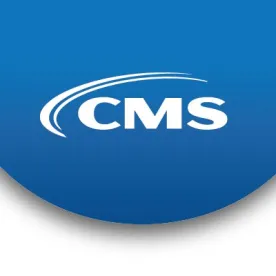On May 14, 2021, the Centers for Medicare and Medicaid Services (CMS) issued a new final rule that will further delay the effective date of the Medicare Coverage of Innovative Technology (MCIT) and Definition of Reasonable and Necessary Final Rule (the Final Rule) until no earlier than Dec. 15, 2021. CMS’s delay of the Final Rule postpones welcomed coverage changes that would temporarily provide Medicare coverage for innovations and advances under a new pathway for breakthrough medical devices called the “MCIT Program.” The MCIT Program would help patients who lack other options to gain immediate access to breakthrough devices while CMS and manufacturers work together to determine if any additional data is necessary for permanent coverage decisions.
In 2016, Congress passed the 21st Century Cures Act, which granted the Food and Drug Administration (FDA) a pathway to speed the review of certain innovative medical devices via a special “breakthrough” designation. The Breakthrough Devices Program replaces FDA’s Expedited Access Pathway and Priority Review for medical devices. The Final Rule would have established a complementary Medicare coverage pathway for breakthrough medical devices through the MCIT Program as well as codify the CMS program manual definition of “reasonable and necessary,” which informs how Medicare and commercial insurers make coverage decisions (the Reasonable and Necessary Standard).
Procedurally, CMS initially published the Final Rule on Jan. 14, 2021, but thereafter delayed the Final Rule until May 15, 2021, pursuant to the Biden Administration’s administrative regulatory freeze. This delay allowed the administration sufficient time to review the scope of the Final Rule and also subjected the Final Rule to an additional 30-day public-comment period. However, as a result of this comment period, CMS received 215 comments regarding the delay and has since determined that implementing the Final Rule by May 15, 2021, is unworkable given the scope of its changes.
The MCIT Program
The Final Rule’s proposed creation of the MCIT Program was generally well-received by the medical device industry because it would bridge the coverage gap between FDA approval and permanent coverage decisions for medical devices with the FDA breakthrough designation. Medicare coverage for breakthrough devices would last for an initial period of four years beginning immediately on the date of FDA marketing clearance or approval. A manufacturer may choose a date within two years thereafter, however, this initial period of coverage under the MCIT Program will end in four years in all circumstances. Following expiration of the initial four-year period, traditional Medicare coverage standards would then be applied to determine whether and to what extent continued Medicare coverage of the subject device would be appropriate by utilizing typical Medicare processes (i.e., National Coverage Determinations (NCDs), Local Coverage Determinations (LCDs), or claim-by-claim insurer adjudication).
The current version of the Final Rule would result in meaningful inter-agency precedent, allowing medical device manufacturers to obtain reimbursement entirely on the basis of FDA designating their devices as “breakthrough.” Essentially, the device must meet the first criterion under section 515B(b)(1) of the FD&C Act, in that it is determined to be more effective in treating or diagnosing life-threatening or irreversibly debilitating human disease or conditions, and one of the sub-paragraphs listed in section 515B(b)(2) of the FD&C Act: (a) represented a breakthrough technology; (b) had no approved or cleared alternative; (c) offered significant advantages over existing alternatives; or (d) whose availability is in the best interest of patients. In other words, once FDA approval or clearance was realized for a breakthrough device, the device would be deemed reasonable and necessary pursuant to CMS regulation for the designated time period, which would thereafter assist manufacturers in pursuing permanent coverage under the Medicare program.
The MCIT Program coverage pathway only addresses the “reasonable and necessary” prong of Medicare’s entire medical device coverage standard. The MCIT Program would not address whether a medical device is excluded from coverage by the Medicare statute or whether a medical device falls within a Medicare covered benefit category. As such, the MCIT Program appropriately recognizes that if a device does not fit within a Medicare covered benefit category, the device would not be eligible for coverage through the MCIT pathway or any other Medicare coverage pathway.
The Reasonable and Necessary Standard
Notably, the Final Rule as currently written would include a regulatory definition of “reasonable and necessary” that is intended to apply to all items and services furnished under Medicare Parts A and B, including those that would ostensibly be covered under the MCIT Program. While CMS had previously defined “reasonable and necessary” in its Program Integrity Manual, it has now codified the Manual definition into regulation through the MCIT Final Rule. Although opposed by many commenters, CMS determined it was required to codify the Reasonable and Necessary definition consistent with the Supreme Court’s decision in Azar v. Allina Health Services, 139 S. Ct. 1804 (2019). CMS also claimed that by codifying the longstanding agency policy, it will have the force of law, provide greater stability, and the public will be given the opportunity to participate in rulemaking.
Under the Final Rule, an item or service is “reasonable and necessary” if it is (1) safe and effective; (2) not experimental or investigational; and (3) appropriate, including the duration and frequency that is considered appropriate for the item or service, in terms of whether it is—(i) furnished in accordance with accepted standards of medical practice for the diagnosis or treatment of the patient's condition or to improve the function of a malformed body member; (ii) furnished in a setting appropriate to the patient's medical needs and condition; (iii) ordered and furnished by qualified personnel; (iv) one that meets, but does not exceed, the patient's medical need; and (v) at least as beneficial as an existing and available medically appropriate alternative.
Future of the Final Rule
Despite the continued delay of the Final Rule, it appears likely that the MCIT Program for breakthrough devices will be implemented in the future in a manner that is consistent with the legislative intent of the 21st Century Cures Act in order to help accelerate medical product development and make new innovations available faster. The Biden Administration has expressed support for expanding access to innovative medical care in the Medicare program and the MCIT Program’s historically broad support from affected stakeholders.




 />i
/>i
